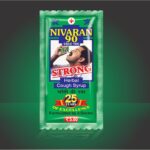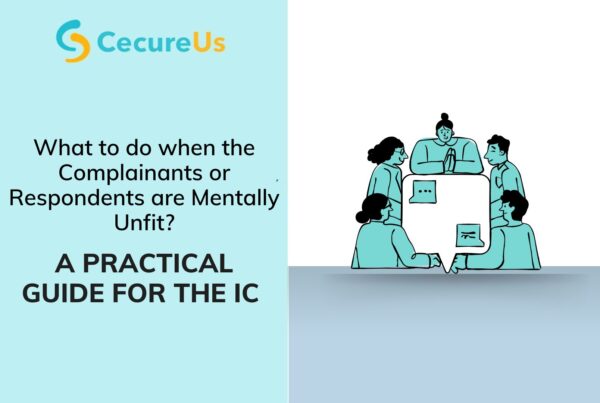The marketing domain is a hub of innovations. Marketing plays a pivotal role for the brands in the business, whether pitching in a new product to the customers or sustaining the brand position or sales and values of already existing commodities. Thanks to the internet era, the product reach has increased manifold compared to the previous two decades, and the marketing discipline is constantly evolving. Social media promotions and Advertisement campaigns are taking the world by storm with their widespread influence on Gen Y or Millennials and Gen Z, who carve the future of a discrimination-free world with inclusive diversity as its motto.
Inclusive diversity at the workplace – An overview
A land of heritage like India, which is home to people from several distinct backgrounds, cultures, castes, languages, colours, religions, creeds, gender, sexual orientation, etc…, flaunts diversity in its origin and form. A workplace/business is deemed diverse if its employees belong to these various sectors and backgrounds; if the employer brings together people from different generations and from the physically disabled group into the workplace. It does not stop there. Diversity in business is also marked by the diverse vendors, stakeholders, and customers.
Diversity and Inclusion are often used in coherence while understanding Inclusive Diversity. However, there is a significant difference between the two. If ‘Diversity’ is about hiring or targeting people from diverse walks of life, ‘inclusiveness’ brings them all to work together and values them equally. Diversity is incomplete in business without inclusiveness, and they both go hand in hand.
Diversity, Inclusiveness, Gen Y, and Gen Z
Gen Y and Gen Z are more progressive in their thoughts than the older generations, whether about a woman’s empowerment, racism, or gender equality, to name a few, and Inclusive Diversity has become their mantra in every walk of life. They are more independent in their notions and are no longer susceptible to age-old prejudices and social taboos or discriminations. This reflects in their expectations from brands in the business as well. Survey shows that Millennials are loyal to those brands that employ Inclusive diversity not just in their products and campaigns but value them whole-heartedly in their workplaces.
Most businesses these days are set up with the fundamental concepts of Inclusive diversity. Does that mean that there is no discrimination in the workplace at all? According to the World Economic Forum, it would take a minimum of 200 years to bridge the gap in gender pay parity in organizations across the globe. In the boardroom of the Fortune 500 companies, only 6.6% are women, and 15% are people of colour. How often do we come across women in leadership roles in Indian business organizations? If we look at the statistics, most women drop out of the workforce at a young age. And in many workplaces, women face rejection due to various personal reasons, for instance, getting married or going on a few months of maternity leave. This outlines that we still have a long way to go despite the progressive thoughts.
Diversity as a marketing strategy
There are two principal aspects of marketing. From the business end, the advertising campaigns of brands, their communication, the content they take to the consumers, product value, or brand promotions combined as one entity, and the broad customer base. A marketing strategy for business is considered a success when the collaterals successfully draw the attention of various segments of a targeted customer group.
The current trend in business witnesses extensive marketing through WhatsApp and other social media against age-old means. Those brands that understand the customer base better and those whose advertisement campaigns are based on Inclusive diversity have become trendsetters. From small start-up businesses to established corporate giants, almost every organization has a research and marketing team that attempts to connect with a diverse group of customers on a deeper level to gain their trust and loyalty.
Diversity Marketing, sometimes known as In-culture Marketing, is principled in inclusiveness and allows an organization to achieve the same by appealing to diverse customers in a target group so that no one feels left out.
The basics of Diversity Marketing for businesses
Marketing strategies come with a fair share of research on the requirements and expectations of the end consumers. When brands incorporate inclusive diversity in their marketing, it is also vital to be empathetic towards the target consumers, and respect their culture, values, traditions, and languages, to name a few.
Here are a few pointers to note when organizing or shaping an advertisement or campaign for the brands.
- Ensure thorough prior research on the customer base.
- Frame your visuals thoughtfully because these profoundly impact the customers.
- Use inclusive language so that no one feels left out.
- Avoid stereotypes against women and appropriations that might hurt consumer sentiments.
- Seamlessly incorporate Inclusion into diversity marketing for business. Make sure it is perfect for the end customers.
- Take continuous feedback from customers and work on improvising.
Diversity Marketing – Success stories
A few years ago, it was brought to the attention of Microsoft that traditional gaming controllers were not user-friendly for the physically disabled. Immediately the tech-giant jumped into action. They came up with a quick solution by developing controllers with various enhanced features that made them disabled-friendly and gave them the same experience of gaming any other person would have by introducing touchpads instead of buttons, enhancing colours, audio, and other effects. Microsoft also produced a committed line of communication to receive requests for future modifications and incorporated them into their ads. In this way, Microsoft succeeded in tapping the market, including the physically disabled.
Fenty Beauty, a make-up line by Rihanna, introduced a foundation cream with 40 different shades, previously unheard of in the beauty market for women. The business launch took YouTube by storm, leading to the Fenty Effect, and the product itself was a big hit among women, making a profit of 100 million USD in the first 40 days. This is a typical example of seamlessly blending Diversity and Inclusion in the business campaigns and setting the base of ‘Showing and not just telling’ about the same.
When it comes to Diversity Marketing, Indian business campaigns are no less.
Ariel’s Share the Load campaign broke the stereotype that house chores are a woman’s business. It brought in the men and boys of the house to share the load with women, and this campaign hit the bull’s eye. It had touched the consumers on a sincerer level.
Bhima Jewellers’ – ‘Pure As Love’ campaign was an endearing ad of a man turning into a transwoman, and the commercial showcased an entire family welcoming her with open arms. This kind of inclusiveness in the business succeeds in winning hearts, and the video itself went viral.
The recent recreation of the 90s’ iconic Cadbury’s Dairy Milk ad with a gender swap is a typical example of inclusiveness. It shows a woman cricketer on the pitch and a man celebrating the victory. This visual has won the hearts of millions of Indians who have tweeted that this is a much-needed change.
Why is empathy needed in Diversity Marketing?
When targeting people from diverse cultural backgrounds, brands should consider their sentiments. Otherwise, it could backfire on the brand’s image in the business field.
A few years ago, Dolce and Gabbana, an Italian fashion brand, tried to venture into the Chinese market. The ad Campaign featuring the Chinese model Zuo Ye attempting to try out Italian foods like Spaghetti and Pasta using chopsticks triggered an uproar due to its disrespect towards Chinese culture. The controversial advertisement campaign backfired as Chinese sentiments were hurt, several celebrities terminated their contracts with D&G, and the ad was considered racist. Apart from affecting the brand’s image, it also led to the brand publicly apologizing to the Chinese. Three years since the incident, D&G has not regained the trust of Chinese customers.
The recent advertisement by Manyavaar featuring Alia Bhatt received criticism on social media for portraying the Hindu ritual of Kanyadaan as being regressive. People have slammed the brand for targeting Hindu customs in particular.
So, when it comes to Diversity marketing in business, brands should be inclusive and extra careful not to hurt the religious and cultural sentiments of the target population. A little empathy and a thorough understanding of the target group would avoid such incidents and controversies.
Diversity Marketing to target the micro-communities
Marketing is not only about targeting the prime groups of customers. It is also about thinning the walls between the brands and the marginalized and the underrepresented groups, known as micro-communities.
Most brands approach the tier 2 and tier 3 based population by introducing their products in sachets. And the predominant way of connecting with the target population is by the picture on the sachet.
For instance, the cough syrup Nivaran 90, widely available in a sachet, has only a male on the cover. However, the ayurvedic product is safe to use not just for adults but also for children. The picture on the sachet failed to communicate this fact, and the brand could not draw the young kids of the segment.
 Image Source*: Amazon
Image Source*: Amazon
Another example of how cover pictures can be misleading is the shampoo sachets. Most shampoo sachets like Velvette, Chik, Sunsilk, or even Clinic Plus have women on their cover. Does it mean that the products are only for women? It would be appropriate if both genders were featured on the product sachets for better reach among the micro-communities.
 Image Source*: Amazon
Image Source*: Amazon
Incorporating Inclusive Diversity in the rank and file of employees in the workplace
Fusing the concept of Diversity and Inclusion among all employees in the workplace can be challenging. The idea should be incorporated into the leadership first by bringing in the multiple talents of women, people of LGBTQ, people of mixed races, and those with physical disabilities into the boardroom. Organizations should nurture the progressive thought processes of employees through frequent workshops.
The famous hospitality brand Lemon Tree has set the stage by employing people with autism and those with visual and hearing impairments in their hotels. This gesture has won the loyalty of many customers, and their brand value has shot up like never before. The MRTS in different cities like Noida and Chennai have employed third genders in various roles. This showcases how a corporation can excel in inclusive diversity.
Can Diversity Marketing double profits in a business?
Diversity and Inclusion is a continuous, evolving process that takes us closer to bridging the gap across various sectors, whether gender, pay scale, sexual orientation, or the kind. It consolidates a more talented group that works towards the betterment of the brands as a whole.
Research has proven that Organizations that value Inclusive diversity in every aspect have seen at least a 20% increase in their productivity and innovation.
So, if you are looking for a marketing strategy to target a broad spectrum of end-users, Diversity Marketing with inclusiveness is the best choice!
For more information on Prevention of Sexual Harassment(POSH), EAP (Employee Assistance Programs), D&I (Diversity and Inclusion) offerings by CecureUs , please contact connect@cecureus.com or call us at +91-7200500221




